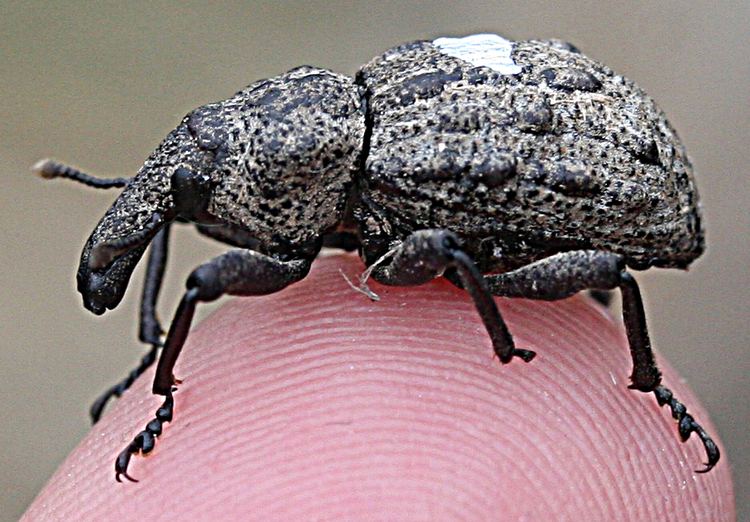Order Beetle | Subfamily Molytinae Scientific name Karocolens tuberculatus Rank Species | |
 | ||
Similar Beetle, Molytinae, Aciphylla, Takahē, Weevil | ||
Hadramphus tuberculatus (known as the Canterbury knobbed weevil, Spaniard weevil or Banks Peninsula speargrass weevil) is a rare weevil endemic to the Christchurch area in the South Island of New Zealand. It was thought to be extinct from 1922 to 2004.
Contents
Description
H. tuberculatus is a flightless weevil with a knobbed back. It reaches a length of 11.7–16.3 millimetres (0.46–0.64 in) and a width of 6.5–8.3 mm (0.26–0.33 in). It has a dark brown body with greyish-brown scales.
Status
It was apparently common over the Canterbury Plains in the 1870s. The causes for its disappearance were possibly the removing of the speargrass, its host plant, by farmers and the arrival of rats in that region which had eaten the beetles. It was last seen in 1922 until it was rediscovered in late 2004 by research students of the University of Canterbury at Burkes Pass near Lake Tekapo, South Canterbury, New Zealand. It is now listed as nationally endangered in the red list of New Zealand and as critically endangered in IUCN Red List 2014. A detailed ecological study conducted by researchers at Lincoln University in 2009–2011 estimated the population size at Burkes Pass to be only 138 individuals in 2009 which gradually decreased each year to 76 in 2011.
